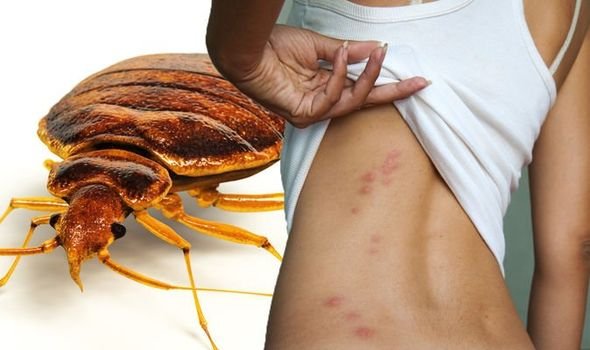The Ultimate Bed Pest Treatment Manual: Expert Insights and Recommendations
Within the realm of bug control, bed bugs position an one-of-a-kind difficulty with their evasive nature and resilient existence. The pursuit for efficient bed pest therapy methods has brought about a myriad of recommendations and remedies, some more trusted than others. In this handbook, experts in the field use their understandings and recommendations based on years of experience combating these consistent pests. From recognizing bed bug actions to implementing avoidance strategies and determining problems, this thorough overview aims to gear up readers with the knowledge required to deal with bed pest concerns effectively.

Understanding Bed Bug Actions
Recognizing the detailed behavior patterns of bed insects is vital for effective pest control approaches. Bed pests, clinically known as Cimex lectularius, are small, reddish-brown parasitical bugs that feed upon the blood of human beings and pets. These nocturnal pests are experienced at concealing in fractures and crevices near their hosts' resting areas, making them challenging to detect and get rid of.

Effective Avoidance Methods
One of the key prevention tactics is to routinely examine and clean locations where bed pests can conceal, such as bed linens, furnishings, and fractures in wall surfaces. When buying pre-owned furniture or garments, checking things thoroughly before bringing them into the home is essential in avoiding bed bug infestations. By including these preventative steps into normal family routines, individuals can dramatically lower the probability of bed bug problems.
Identifying Bed Pest Invasions
Upon entering an area presumed of a bed bug problem, one might discover little red or brown spots on bed linens or furniture, showing the existence of these pests. Bed pests usually leave behind these obvious fecal stains as they prey on human blood during the evening. Another usual sign of a bed pest infestation is the visibility of molted exoskeletons shed by expanding bed bugs. These exoskeletons are transparent and can be found near their concealing spots. Furthermore, bed bug bites on the skin, which show up as red and itchy welts usually organized straight or collection, may recommend an infestation.
A mildewy odor in the room can likewise show the visibility of bed insects, as these parasites release pheromones that lead to a distinctive odor. Checking cracks and crevices in furniture, walls, and cushion joints may reveal actual bed insects, which are reddish-brown, oval-shaped bugs regarding the dimension of an apple seed. Recognizing these signs is vital for very early discovery and reliable therapy of bed bug infestations.
Recommended Treatment Techniques
Effective bed insect therapy approaches depend on a mix of comprehensive evaluation, targeted extermination, and preventative actions to get rid of problems properly. The initial action in dealing with bed pests is a detailed inspection to determine the extent of the infestation. This frequently involves examining areas where bed bugs are most likely to conceal, such as cushion seams, furniture joints, and electric outlets. Once the infestation is confirmed, targeted elimination approaches can be utilized. Typical techniques include using insecticides, warmth treatments, or freezing techniques to eliminate bed insects in any way life stages. It is important to comply with the directions offered by insect control professionals when using these techniques to make sure security and effectiveness.
Along with elimination, preventive procedures play a vital role in protecting against future infestations. This consists of regularly cleaning up and decluttering living spaces, securing cracks and holes where bed pests can hide, and utilizing cushion encasements to secure versus infestations. By incorporating thorough evaluation, targeted elimination, and safety nets, people can properly combat bed insect problems and maintain a bed bug-free environment.
Preserving a Bed Bug-Free Atmosphere
After applying reliable bed insect treatment methods, maintaining a bed bug-free setting visit our website calls for constant watchfulness and proactive measures to protect against future problems. Consistently evaluating living areas, particularly beds, furniture, and splits in wall surfaces, is important. Enclosing bed mattress and box springs with bed bug-proof covers can protect against any type of staying bed subterranean termite control bugs from escaping or brand-new ones from infesting. Vacuuming on a regular basis, particularly along baseboards, carpetings, and furniture, aids to eliminate any potential bed pests or eggs. Furthermore, washing and drying out bed linen, bed linens, and apparel over heat can remove any bed pests existing. It is vital to declutter living spaces to lower hiding places for bed insects. Securing cracks and gaps in wall surfaces, furniture, and various other potential hiding places can restrict bed pest movement and prevent infestations. If taking a trip or buying pre-owned furnishings, inspect products extensively prior to bringing them into the home. ez bed bug exterminator chicago. By complying with these aggressive steps continually, a bed bug-free environment can be preserved properly.
Verdict
